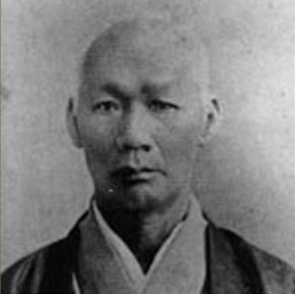On 1851-01-03, three persons from Tosa province [on Shikoku] of Japan arrived in a jolly boat at the seashore of Odo village. Subsequently, when asked about their history and origins, they told the following:
“On 1841-01-05, we set out to the open sea to fish on a small boat. At that time we suddenly encountered a storm and drifted along with the wind. After several days we arrived at an uninhabited island, situated in direction Southeast by east. Our boat was smashed to pieces on the reef and we saved our lives climbing on the shore. There was no food on that island so we caught many birds to feed upon, and this saved us from starvation.
Coming the 6th month of 1841 we saw a whaler from the United States (Yamiligan-guo 亜米理幹國) passing by that island. We attracted their attention and they send a boat that took us to that wahler and saved our lifes. On that whaler we the arrived in the Western country of 㕶(口+襪)(口+湖) [note: characters can not be displayed]. The captain of the above-mentioned ship entrusted us to a friend, at whose house we were given food, and then the captain and his ship left for the open ocean.
Later, an American ship arrived. We immediately requested earnestly to be allowed on board and to be taken back to Japan. However, since the ship’s captain did not know the sea routes of Japan, he declined our request. Again we requested him to take us along with a boat we would purchase and that when the captain’s ship was somewhere close to the ocean of Japan, we would return to our home country in that boat by ourselves. This the ship’s captain granted and allowed us to travel on his ship.
In the 10th month of 1850 we left the above-mentioned country for the open sea. In the night of 1851-01-02 we arrived about two or three miles from here [Odo village in Mabuni district], steered our boat towards the coast and climbed ashore.
Originally we have been five persons. However, one of us died of an illness in above-mentined country, and one of us remained in that country.”
And when asked whether they had any knowledge of written characters, they said:
“We always only engaged in catching fish and have no knowledge of written characters. The only person is Manjirō 萬次郎, who is quite knowledgable of the American writing.”
In the 7th month of this year 1851, four Japanese officials stationed here in Ryūkyū who had taken them into custody left their office and returned them to their own home country of Japan.
Notes: The person named Manjirō is Nakahama Manjirō, the first Japanese to visit the United States and an important translator during the Opening of Japan.
Reconstructing the above story, the fishermen of 1841 were 14-year-old Nakahama Manjirō and four of his friends, the brothers Goemon, Denzo, Toraemon, and Jusuke.
Their boat was wrecked on the island of Torishima.
The American whaler who rescued them was the John Howland, with Captain William H. Whitfield (1804–1886) in command.
The place where four of them were entrusted to a friend by Captain Whitfield was Honolulu.

Nakahama “John” Manjirō (1827–1898). also known as John Manjirō or John Mung. Source: Wikipedia.
Manjirō continued and enrolled in the Oxford School in the town of Fairhaven, Massachusetts and studied English and navigation for a year, apprenticed to a cooper, and then signed on to the whaler Franklin (Captain Ira Davis).
After whaling in the South Seas, the Franklin put into Honolulu in October 1847, where Manjirō again met his four friends.
In 1850 Manjirō again returned to Honolulu. Two of his companions were willing to return to Japan with him.
Toraemon is the one who remained in Hawaii, because he thought returning to Japan it would be too risky.
Jusuke was the one who died.
The boat they had purchased was the whaleboat Adventure, which was loaded aboard the bark Sarah Boyd (Captain Whitmore) along with gifts from the people of Honolulu.
The date they reached Okinawa was 1851-01-02 according to the lunar calendar. This was February 2, 1851 according to the Western calendar.
The Japanese officials stationed in Ryūkyū must have been members of the Satsuma Resident Commissioners Bureau in Naha. After months of questioning, the three were released in Nagasaki and eventually returned home to Tosa where Lord Yamauchi Toyoshige awarded them pensions.
Manjirō was appointed a minor official and became a valuable source of information.
© 2016, Andreas Quast. All rights reserved.
